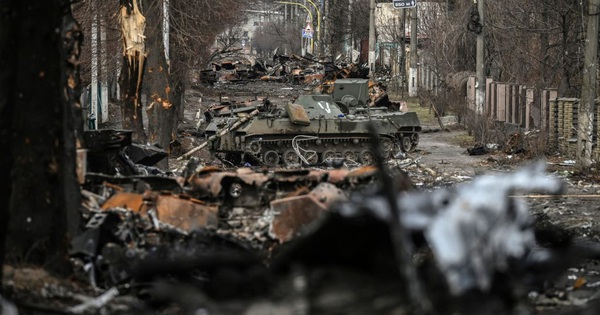The EU recently announced an energy plan called REPowerEU to reduce dependence on fossil fuels from Russia, accelerating the shift away from carbon-intensive energy. This project is funded by the Commission Europe (EC) draft, with an investment of about 210 billion euros for the period from now to 2027.
REPowerEU is the EU’s ambitious plan, based on six main pillars, including: Energy efficiency; diversify international sources of fossil fuels; accelerate the deployment of renewable energy; reduce fossil fuel consumption in industry and transport; make smart investments and ultimately simplify licensing procedures for large renewable energy projects.
However, according to an analysis by energy consulting firm Rystad Energy, in order to achieve the key goal set out in REPowerEU, which is to make renewable energy make up 40-45% of total supply by 2030, the EU needs an amount of money. investment of at least 1 trillion euros. This amount does not include expenses for other goals, such as the electricity transmission network, the capacity to store long-term renewable electricity when converting energy, especially the battery-powered energy storage infrastructure.
REPowerEU deals with various conversion solutions to deal with the current energy crisis. In which, the most detailed item is the roadmap for solar energy development, with the intention of nearly doubling solar photovoltaic capacity by 2025, to 320 GW and reaching an output of 600GW by 2030.
Solar power production in the EU is currently 198 GW, which means that between now and the end of this decade the EU must increase its capacity by 44 GW on average per year with this renewable energy source, which means installed capacity must increase by nearly twice that of today (24 GW added to the grid in 2021 and around 29 GW this year). To reach the target of 600 GW, additional production must then increase to 56 GW/year.
The average investment for 1 MW of solar PV is currently 1.1 million euros. To add 411 GW between now and 2030 requires an investment of 452 billion euros. In order to achieve the goal of making renewable energy account for 45% of total supply by 2030, the EU will have to significantly increase investment in wind energy sources – a factor that has not been mentioned in depth in REPowerEU. According to Rystad Energy, an additional 450-490 GW of installed wind capacity must be added, resulting in an investment of €820 billion.
Transitioning to renewable energy requires huge capital investment. But up to now, the EC has not detailed the total investment required to realize the set targets. The EC mentioned a budget of $225 billion in the form of loans available between now and 2027, along with an additional investment of $300 billion by 2030.
This figure is all lower than the actual budget for energy transition, with new expenditures for transmission infrastructure, renewable energy storage capacity, gas infrastructure, and energy production. hydrogen. That is not taking into account the sliding price factor in investment, because massive investment will create a scarcity of supply for solar panels, wind turbines, metal volumes, and materials used for building renewable energy infrastructure. creating, causing price increases and adding costs.
According to Carlos Torres Diaz, REPowerEU is an ambitious project. Power companies and energy markets are waiting for details on investments and infrastructure included in REPowerEU. The goals set out in this plan are achievable. But to make it a reality by 2030, it is necessary to have planning, investment levels, construction and production progress like in wartime.
In addition to capital, the EU also has to solve many problems in administrative procedures. REPoerEU recognizes the need to address bottlenecks in the licensing process for renewable energy projects, especially large projects. For example, the current wind power licensing process can take up to nine years. The solution proposed by the EC is to consider renewable energy projects in the list of outstanding public benefits, encourage member countries to set up project development areas, impose deadlines during the review process. review and approve new projects.
at Blogtuan.info – Source: Soha.vn – Read the original article here



